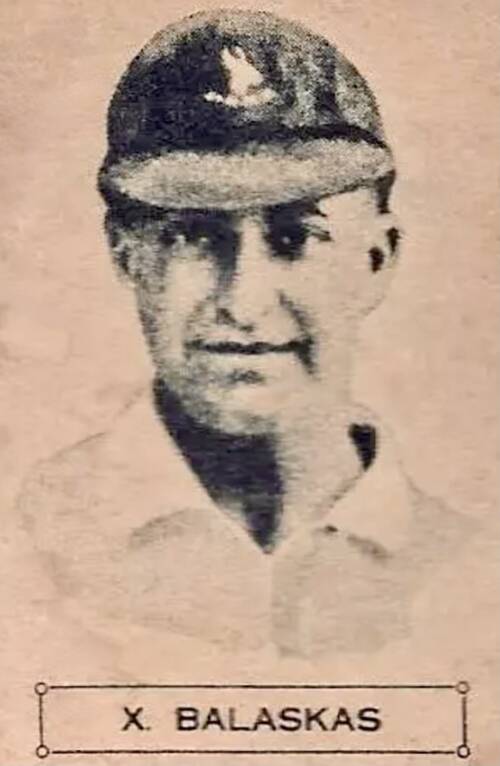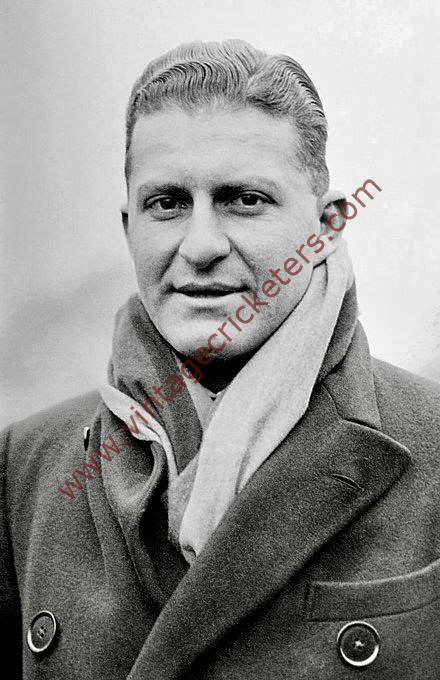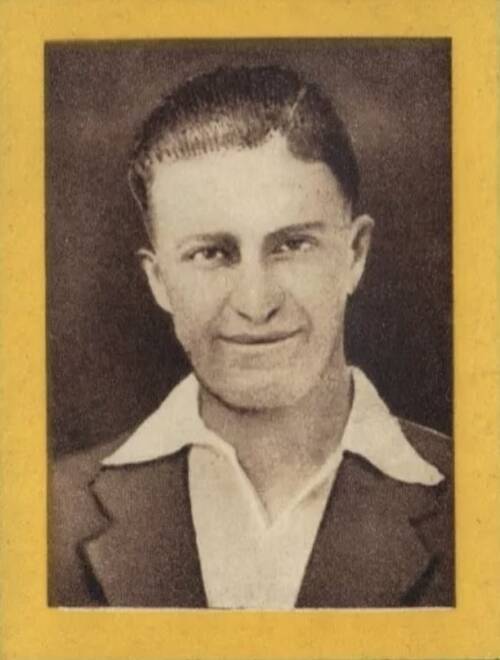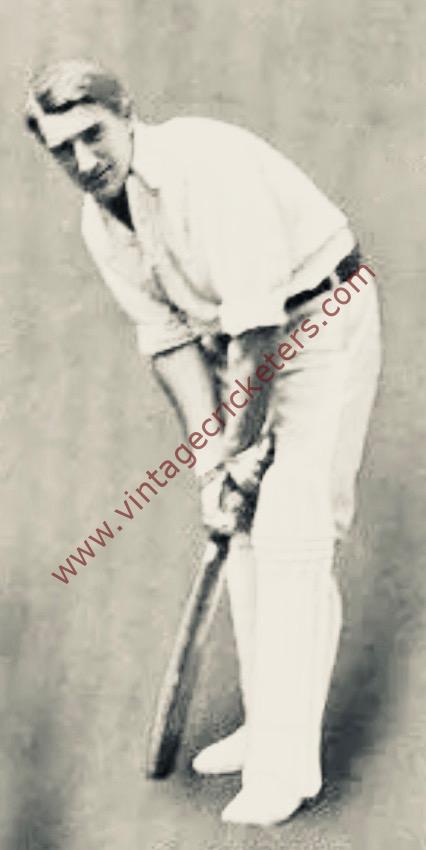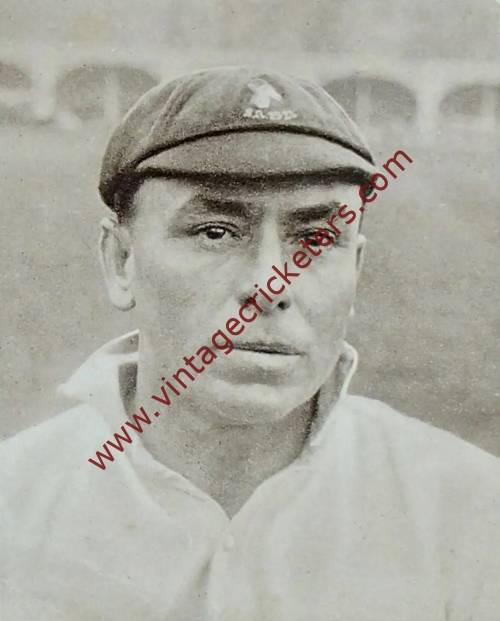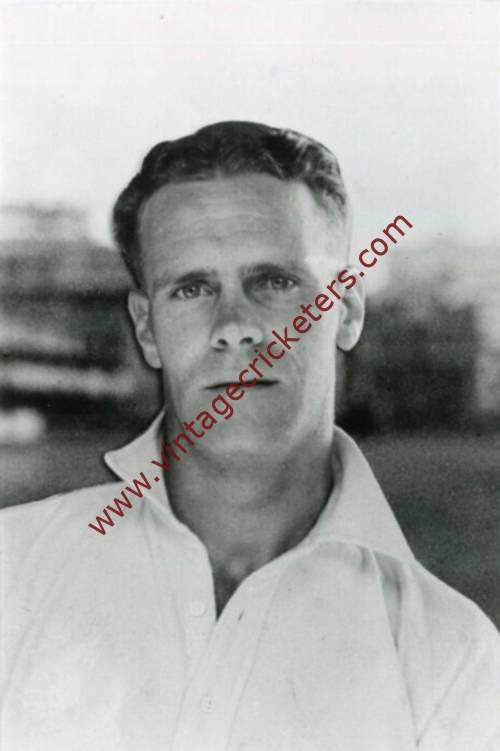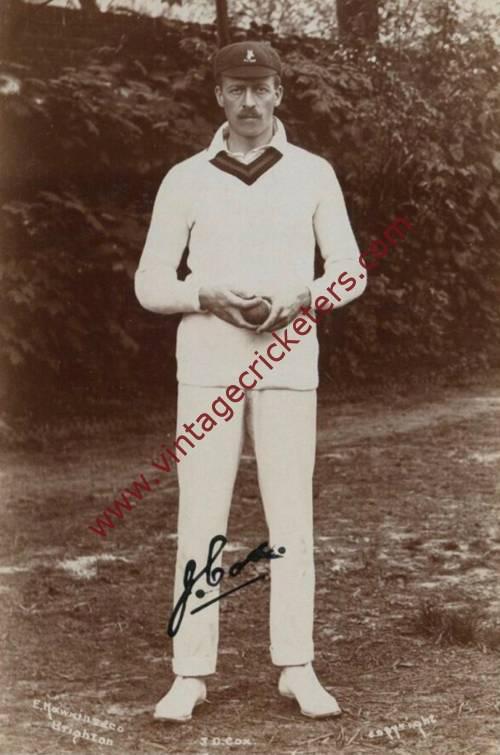Please choose your photo size from the drop down menu below.
If you wish your photo to be framed please select Yes.
Note: 16″x 20″not available in a frame.
Images can also be added to accessories. To order please follow these links
£8.95 – £49.95
Please choose your photo size from the drop down menu below.
If you wish your photo to be framed please select Yes.
Note: 16″x 20″not available in a frame.
Images can also be added to accessories. To order please follow these links
The maximum number of views of this element is reached.
Please contact the webmaster to enable unlimited views.
Kimberley, Cape Province, South Africa born all rounder, right handed batsman and right-arm leg break and googly bowler Xen Balaxkas made his first class debut for Griqualand West in 1926-27, but did not really break through until 192930. In that year he topped both the runs and wickets lists in The Currie Cup by taking 39 wickets at 21.20, including five five-wicket hauls, scoring 644 runs at over 80, including a career-best 206 against Rhodesia.
The following season he made his Test match debut against England at Johannesburg’s Old Wanderers ground in December 1930, but made no impact, scoring 7 and 3 and bowling just two overs in the match. The second Test at Cape Town proved only slightly better: South Africa recorded an innings victory, but Balaskas made a duck and took 2-104 in the match; he was dropped for the rest of the series.
In 1931-32, he toured Australia and New Zealand with South Africa, but he managed to get into the Test side only for the second leg of the tour, repaying the selectors with his only Test century, 122 not out at Wellington in March 1932. His next Test appearances came in England in 1935 with the touring South African team, and it was there in June at Lord’s (his only appearance of the series) that he produced the best bowling performance of his career, recording splendid analyses of 32-8=49-5 and 27-8-54-4 to help his country to their first Test victory on English soil. His record match winning spell of 9-103 propelled South Africa to register a convincing victory over England by a huge margin of 157 runs. He bowled a marathon spell consisting of 59 overs for the match tirelessly and with great accuracy from the Pavilion End at iconic Lord’s, although the pitch offered assistance to bowlers. It was considered a remarkable upset victory according to critics, and the victory is still regarded as one of the most shocking test match results to this date. Balaskas missed the rest of the series through injury and his subsequent Test career was anticlimactic.
Balaskas took nine wickets in three Tests against Australia the following winter, and playing for Transvaal took 8-60 against Western Province in 1937-38, but there was to be only one further international appearance, against England at Cape Town in December 1938, and a return of 0-115, together with the coming of the Second World War, sealed his fate as a Test cricketer. He resumed his domestic cricket career after the War, and enjoyed a fine 1945-46 season when he took 47 wickets at 15.95, but after a couple of matches the following year he hung up his boots for good. Balaskas has the third lowest Test Match batting average of any player who has made a century, with 14.50 from 13 innings. He took 22 Test wickets at 36.63 apiece, with 5 catches in his 9 matches for South Africa. In 75 first class matches he scored 6 centuries and 12 half centuries with a career batting average of 28.68 from 2,696 runs scored. In addition to 47 career catches he took 276 wickets at 24.11 apiece.
Vintage Cricketers was founded in July 2019. There may be more photographs of this cricketer in the Vintage Cricketers library, which are due to be loaded in due course. In the meantime, please send a message to us using the contact form at the bottom left of this page and we can arrange to prepare and publish all images of this cricketer if you have a particular interest in him.
| Weight | N/A |
|---|
